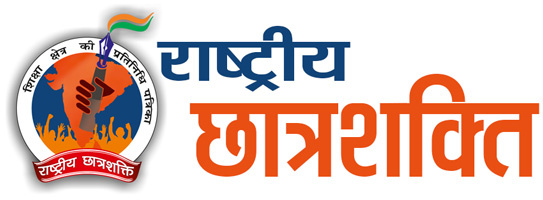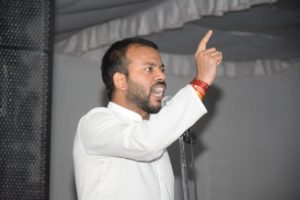Art is an important creation of the development of human society. It is one of the most important aspects of the cultural heritage of humankind. Art as a universal phenomenon has the sense of being a cultural manifestation of all societies past and present. In the view of the Indian civilization, the equivalent context is sabhyata, a word derived from sabha which means ‘shining together’ and the latter one meant ‘an assembly of men in harmony’. This theme of harmony of the mind, action and speech pervades not only in the ancient Indian philosophy but also in music, art, aesthetics and even in sciences, astronomy, civil engineering.
India has always been a land of unique cultural, traditional vibrancy and has a distinctive diversified nature. A nation of hundreds of janjatis or tribes, almost every region in India has different forms of traditional art practiced by several tribes or rural population. Hence, tribal art accommodates various art forms, such as wall paintings, tribal dances, tribal music and represents the craftsmanship of the tribal people. It expresses a cultural identity by conveying shared community values and aesthetics. The sense of cultural identity or self-image is an integral part of every community and the Indian tribal art is deeply connected to the community.
The tribal artist is no special kind of a human being but every tribal person is a special kind of an artist. This feeling resonates through almost all Indian tribal art forms, irrespective of their ethnicity. The usage of local resources, straw, bamboo, horns, brass etc were used to make objects of ritual and household use. They decorated walls, temples, utensils, graves, puppets with artistic designs and patterns. The methods and materials used were traditional and handed down in the families, generation after generation and still persist with little alteration. The floor and wall were used by tribal artists as canvas by the osa and patachitra in Orissa, in Western India, chitrakathi in Andhra Pradesh, chauka in Chhattisgarh, sashti aripan in Mithila, kollam in Kerala and Tamil Nadu. The strategies of management of forest and water were also a component of tribal art. Sacred groves, shrines and genepools were maintained by tribal artists of kovilikavoos in Kerala and Tamil Nadu, deorai in Maharashtra sarnas in Chhattisgarh and Jharkhand. Till today, the water harvesting structures like the naula of kumaun, vavs of Gujarat remain unmatched.
Indian tribal art is mainly dominated and shaped by customs and rituals, religious motifs, lifestyles and social consciousness. The social norms, moral laws, rites, rituals, in the form of inherited culture, play a crucial role in keeping the social structure stable. The collective conscience produced equips an individual to combat social challenges and prevent himself from losing himself in the process. This is one of the most complex issues faced by the ‘modern’ man today and the answer lies in collective representation. In Indian tribal arts, there is no distinction between the actor and the spectator. As the spectator himself becomes a part of the art the artist becomes a part of social integrity. The embroidery and mural painting of the Toda Tribe; extra-ordinary paintings of the Santhal Tribe; Chhau Dance in West Bengal, Jharkhand and Orissa; Madhubani paintings of the Mithila tribe; Shad Suk Mynsiem Dance of Meghalaya; Gond Paintings; Bhagoria Dance of Madhya Pradesh; Kalamezhuthu of Kerala and many more, the existence of the vanvasis is interwoven with music and dance, rituals and ceremonies. The quality of freshness, spontaneity, sincerity and simplicity of tribal art and culture is enthralling. “Sen ge sueun, kaji ge Durang” (To walk is to dance, to speak is to sing), a Munda tribal proverb aptly describes the creative spirit of the Indian tribes.
Tribal Art forms do not just create a cultural identity but they also have great social missions. The tribal art, through all its mutations and adaptations, has retained a dynamic continuity. This potential of tribal art forms has been proved time and again, especially in instances of national importance where there were many vanvasis who had actively participated in the freedom struggle like Birsa Munda in Ranchi region (Jharkhand State), Kanhoji Bhangare in Maharashtra, Talakkal Chandu in Kerala, Vishoi in Orissa, Tirot Sing in Meghalaya and many more. During this time, the folk and tribal art forms such as Gee-gee of Karnataka, Villupaatu of Tamil Nadu, Kabigan of Bengal were extremely effective in arousing the conscience of the people against the British colonial rule and mobilizing them. But after the national struggle, the Indian tribes were often at the mercy of the shifting political winds of the State Government and a chasm between the mainstream Indian community and their tribal brethren appeared. Various schemes were undertaken to bridge the trust deficit and repercussions of the same can still be seen today. The contemporary relevance of tribal art lies in the deep ecological traditions preserved by the tribes for conservation of a balance between nature and culture. When the Indian Society is under a severe moral and cultural crisis, one must recognize one’s irreconcilable relationship with religion and culture. The Vanvasi brothers are an integral part of the entire society and tenable strategies for enshrining, promoting and propagating tribal art and culture need to be traced out for enhancing the skills of the practitioners of tribal art and culture. Indian tribal art in all its forms, manifestations and glory, must be seen as an integral part of the totality of life-experience at an individual and collective level. The wide spectrum of ideas, material, techniques reflect a diversity and plurality which is a unique feature our nation.
REFERENCES
Chakravarty, K. “Folk and Tribal Arts: Problems of Understanding (Native Art of India).” Native Art of India Ed. by Sathyapal Published by Lalit Kala Akademi,2011,www.academia.edu/37056727/Folk_and_Tribal_Arts_Problems_of_Understanding_Native_Art_of_India_
Chakravarty, K. “Tribal Art Forms of India: A Conceptual Framework for Protection and Regeneration.” Academia.edu – Share Research, www.academia.edu/33668548/Tribal_Art_Forms_of_India_A_Conceptual_Framework_for_Protection_and_Regeneration
Chakravarty, K. “Vishnu-Kosha (A Rare Book).” Exotic India, 2017, www.exoticindiaart.com/book/details/vishnu-kosha-rare-book-NAC890/
Mukhopadhyay, Durgadas. Folk Arts and Social Communication, Publications Division, Ministry of Information and Broadcasting, Government of India, 1994, pp. 1–3.
“Tribal Art: A Universal Creative Art.” IGNCA, http://ignca.gov.in/tribal-art-a-universal-creative-art/
India, Planning Commission, SER Division, and Gramin Vikas Seva Sanshtha. Evaluation Study of Tribal/Folk Arts and Culture in West Bengal, Orissa, Jharkhand, Chattisgarh and Bihar.
https://niti.gov.in/planningcommission.gov.in/docs/reports/sereport/ser/ser_folk2211.pdf
(Author is student of SL JNU)
Understanding the Integral idea of Tribal Art and Culture







